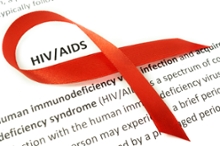
A strategy has emerged called "shock and kill," aimed at activating dormant HIV-infected cells, so that the virus can be flushed out.
Yerkes researchers have been testing one possible way of doing so in a non-human primate model, and reported their findings at the Conference on Retroviruses and Opportunistic Infections in Boston.
An immune-enhancing treatment can push SIV (simian immunodeficiency virus) out of its hideouts in infected monkeys that have the virus controlled with drugs, scientists at Yerkes National Primate Research Center, Emory University report. The results were presented on Wednesday, February 24 at the Conference on Retroviruses and Opportunistic Infections in Boston by graduate student Geetha Mylvaganam.
Rama Rao Amara, PhD, professor of microbiology and immunology at Yerkes and the Emory Vaccine Center, led the project. Collaborators include Rafi Ahmed, PhD, director of Emory Vaccine Center and a Georgia Research Alliance Eminent Scholar, and Gordon Freeman, PhD, of Dana-Farber Cancer Institute. Mylvaganam is part of the Immunology and Molecular Pathogenesis graduate program at Emory.
Antiretroviral drugs can usually control HIV in chronically infected people, but they can’t completely eliminate it. That’s because some immune cells harboring the virus remain dormant. A strategy has emerged called "shock and kill" or "kick and kill", aimed at activating those cells, so that the virus can be flushed out.
The Yerkes team tested the effects of blocking PD-1, a molecule that inhibits the immune response during chronic infections, in combination with antiretroviral therapy. Antibodies that block PD-1 have also been tested, with some success, as cancer immunotherapy agents. The team developed a "primatized" anti-PD-1 antibody, to reduce monkeys’ immune responses to the antibody itself and enable repeated infusions.
With some SIV-infected monkeys, the researchers treated them with anti-PD-1 antibody for 14 days, starting from 10 days before antiretroviral therapy began. In this situation, the anti-PD-1-treated animals showed more rapid viral suppression (average 42 days in the PD-1 group versus 140 days in controls) and more active antiviral T cells.
In addition, other SIV-infected monkeys were treated with anti-PD-1 antibody (three infusions, with a month between each) after antiretroviral therapy had brought viral levels to a very low level. This resulted in transient reappearances of SIV in their blood, not seen in control animals.
The researchers conclude: "These results reveal for the first time the potential of PD-1 blockade, both on restoring anti-viral CD8 T cell function, and possibly destabilizing the viral reservoir under ART. They highlight the potential of PD-1 blockade to work synergistically with other therapeutic agents such as vaccines and latency reversing agents to effectively diminish HIV reservoir under ART as a means to establish a functional cure."
